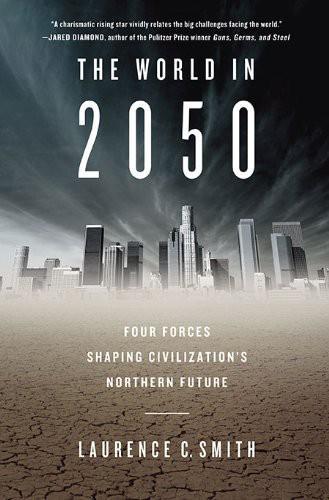
The World in 2050: Four Forces Shaping Civilization's Northern Future
by
Laurence C. Smith
Published 22 Sep 2010
A murmur rolled through the hall—even scientists enjoy a good animated graphic over tables of numbers any day. After Serreze’s talk we milled around some more, wrangling over things like “model downscaling,” “cloud forcing,” and “nonlinear dynamics.” Some were revising the old projections for an ice-free Arctic Ocean from 2050 to 2035, or even 2013. Others—including me—argued for natural variability. We thought the 2007 retreat could just be a freak and the sea ice would recover, filling up its old territory by the following year. We were wrong. The excursion persisted for two more years, with 2008 and 2009 also breaking records for the Arctic summer sea-ice minimum.
…
By responding in this way to small global temperature changes, sea ice thus amplifies them even more.292 While its global effect is small, the ice-albedo feedback is uniquely powerful in the Arctic because it is the only place on Earth where a major ocean gets coated with ephemeral floating sea ice during the summer. Antarctica, in contrast, is a continent of land, thickly buried beneath permanent, kilometers-thick glaciers. For this and several other reasons, climate warming is more amplified in the Arctic than the Antarctic. 293,294 As an ice-free Arctic Ocean warms up, it acts like a giant hot-water bottle, warming the chilly Arctic air as the Sun crawls off the horizon each winter. The sea ice that does eventually form is thin and crackly, allowing more of the ocean’s heat to seep out even during the depths of winter. Winters become milder, the autumn freeze-up happens later, and the spring thaw arrives earlier.
…
Dream On So by 2050 will global trade flows be pouring through the Arctic Ocean, as they do today through the Suez and Panama canals? Impossible. Those operate 365 days per year with no ice whatsoever. At best the Arctic Ocean will become ice-free for a few days to a few weeks in summer and even then, there is no such thing as a truly “ice-free” Arctic Ocean. From autumn through spring, there will be expanding first-year ice cover, slowing ships down even with icebreaker escort. In summer, there will always be lingering bits of sea ice floating around, as well as thick icebergs calved from land-based glaciers into the sea (a glacier iceberg sank the Titanic, not sea ice).
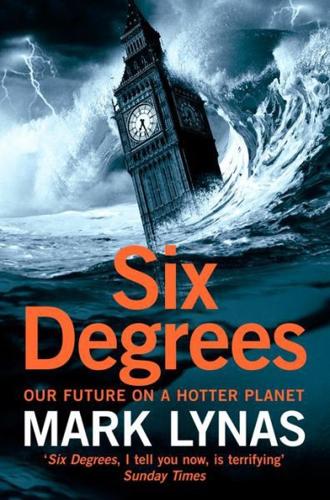
Six Degrees: Our Future on a Hotter Planet
by
Mark Lynas
Published 1 Apr 2008
Given that these high-altitude wind belts-narrow corridors of rapidly moving air at the top of the troposphere-mark the boundaries between the different air masses, their gradual movement shows that the location of the world's typical climate zones is already starting to shift in response to rising global temperatures. What we have so far witnessed is still only the beginning. As one group of scientists warned recently: ‘The Arctic system is moving toward a new state that falls outside the envelope of recent Earth history.’ As future chapters show, this new ice-free Arctic will see extreme levels of warmth unlike anything experienced by the northern polar regions for millions of years. Danger in the Alps When the Englishmen Craig Higgins and Victor Saunders left the Hornli hut at 4 a.m. on 15 July 2003, they had no idea that they would end the day being part of the biggest-ever rescue on Switzerland's iconic Matterhorn.
…
Norton & Co., pp. 31-2 p. 196 agricultural production declines: Parry, M., et al., 2004: ‘Effects of climate change on global food production under SRES emissions and socio-economic scenarios’, Global Environmental Change, 14, 53-67 p. 197 James Lovelock: personal communication, 31 March 2006 p. 197 doubling: Flannigan, M., et al., 2005: ‘Future area burned in Canada’, Climatic Change, 72,1-16 p. 198 early Eocene: Dawson, M., et al., 1976: ‘Paleogene terrestrial vertebrates: northernmost occurrence, Ellesmere Island, Canada’, Science, 192, 781-2 p. 198 differences between seasons: McKenna, M., 1976: ‘Eocene paleolatitude, climate and mammals of Ellesmere Island’, Palaeogeography, Palaeoclimatology, Palaeoecology, 30, 349-62 p. 199 new mammal species: Rose, K., 1980: ‘Clarkforkian Land-Mammal Age: revised definition, zonation, and tentative intercontinental correlation’, Science, 208, 744-6 p. 200 extinction event: Kennett, J., and Stott, L., 1991: ‘Abrupt deep-sea warming, palaeoceanographic changes and benthic extinctions at the end of the Palaeocene’, Nature, 353, 225-9 p. 201 Dickens thought: Dickens, G., et al., 1995: ‘Dissociation of oceanic methane hydrate as a cause of the carbon isotope excursion at the end of the Paleocene’, Paleoceanography, 10, 965-71 p. 201 Katz found evidence: Katz, M., et al., 1999: ‘The source and fate of massive carbon input during the latest Paleocene Thermal Maximum’, Science, 286,1531-3 p. 202 Geologists have dated: Storey, M., et al., 2007: ‘Paleocene-Eocene Thermal Maximum and the opening of the Northeast Atlantic’, Science, 316, 587-9 p. 202 Spain: Schmitz, B., and Pujalte, V., 2003: ‘Sea-level, humidity, and land-erosion records across the initial Eocene thermal maximum from a continental-marine transect in northern Spain’, Geology, 31,8, 689-92 p. 202 ‘megafan’: Schmitz, B., and Pujalte, V., 2007: Abrupt increase in seasonal extreme precipitation at the Paleocene-Eocene boundary', Geology, 35, 3,215-18 p. 202 the seas acidic: Zachos, J., et al., 2005: ‘Rapid acidification of the ocean during the Paleocene-Eocene Thermal Maximum’, Science, 308,1611-15 p. 202 North America: Retallack, G., 2005: ‘Pedogenic carbonate proxies for amount and seasonality of precipitation in paleosols’, Geology, 33,4, 333-6 p. 203 Rockies: Sewall, J., and Sloan, L., 2006: ‘Come a little bit closer: A high-resolution climate study of the early Paleogene Laramide foreland’, Geology, 34, 2, 81-4 p. 203 England and Belgium: Retallack, G., 2005: ‘Pedogenic carbonate proxies for amount and seasonality of precipitation in paleosols’, Geology, 33, 4, 333-6 p. 203 own greenhouse effect: Jahren, A., and Sternberg, L., 2003: ‘Humidity estimate for the middle Eocene Arctic rain forest’, Geology, 31,5, 463-6 p. 203 sea temperatures: Sluijs, A., et al., 2006: ‘Subtropical Arctic Ocean temperatures during the Palaeocene/Eocene thermal maximum’, Nature, 441, 610-13 p. 203 Air temperatures: Weijers, J., et al., 2007: ‘Warm Arctic continents during the Palaeocene-Eocene Thermal Maximum’, Earth and Planetary Science Letters, in press p. 203 higher rainfall: Pagani, M., et al., 2006: Arctic hydrology during global warming at the Palaeocene/Eocene thermal maximum', Nature, 442, 671-5 p. 203 no ice: Kerr, R., 2004: ‘Signs of a warm, ice-free Arctic’, Science, 305,1693 p. 203 temperatures soared: Pagani, M., et al., 2006: An ancient carbon mystery', Science, 314,1556-7 p. 204 Gerald Dickens: Dickens, G., 1999: ‘The blast in the past’, Nature, 401, 752-5 p. 204 John Higgins and Daniel Schrag: Higgins, A., and Schrag, D., 2006: ‘Beyond methane: Towards a theory for the Paleocene-Eocene Thermal Maximum’, Earth and Planetary Science Letters, 245, 523-37 p. 204 early Eocene: Lowenstein, T., and Demicco, R., 2006: ‘Elevated Eocene atmospheric CO2 and its subsequent decline’, Science, 313,1928 p. 204 30 times faster: 2006: ‘Lesson from 55 million years ago says climate change could be faster than expected’, Daily Telegraph, 17 February 2006 p. 204 searing global heatwave: Thomas, D., et al., 2002: ‘Warming the fuel for the fire: Evidence for the thermal dissociation of methane hydrate during the Paleocene-Eocene thermal maximum’, Geology, 30,12, 1067-70 p. 205 decrease by 85 per cent: Buffett, B., and Archer, D., 2004: ‘Global inventory of methane hydrate: sensitivity to changes in the deep ocean’, Earth and Planetary Science Letters, 227,185-99 p. 205 Arctic Ocean: see ‘Methane hydrates and global warming’, RealClimate blog, 12 December 2005, http://www.realclimate.org/index.php?
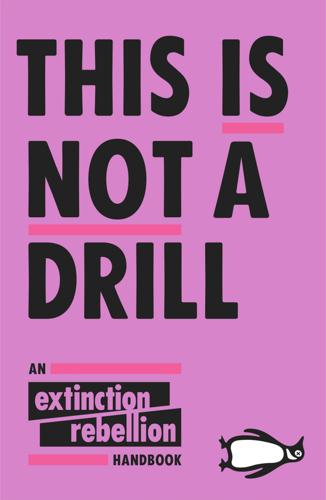
This Is Not a Drill: An Extinction Rebellion Handbook
by
Extinction Rebellion
Published 12 Jun 2019
So who am I to spread panic and fear when the world’s top scientists say we have twelve years? Like many readers, I had assumed the authority on climate was the IPCC – the Intergovernmental Panel on Climate Change – but it turns out they’ve been consistently underestimating the changes. In 2007 they said an ice-free Arctic was a possibility by 2100. That sounds far enough away to calm the nerves. But real-time measurements are documenting such rapid loss of ice that some of the world’s top climate scientists are saying it could be ice free in the next few years. Sea-level rise is a good indicator of the rate of change, because it is affected by many factors.
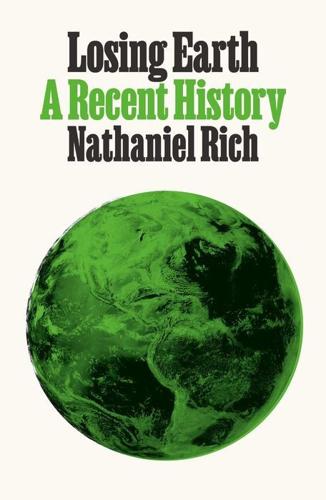
Losing Earth: A Recent History
by
Nathaniel Rich
Published 4 Aug 2018
Nevertheless, as Pomerance flipped through its pages, he could see that it offered no significant new findings. “We are deeply concerned about environmental changes of this magnitude,” read the executive summary. “We may get into trouble in ways that we have barely imagined.” The authors did try to imagine some of them: an ice-free Arctic, for instance, and Boston sinking into its harbor, with Beacon Hill surfacing as an island two miles off the coast. There was speculation about political revolution, trade wars, and a long quotation from A Distant Mirror, the medieval history written by Barbara Tuchman, Pomerance’s aunt, describing how climatic changes in the fourteenth century led to “people eating their own children” and “feeding on hanged bodies taken down from the gibbet.”
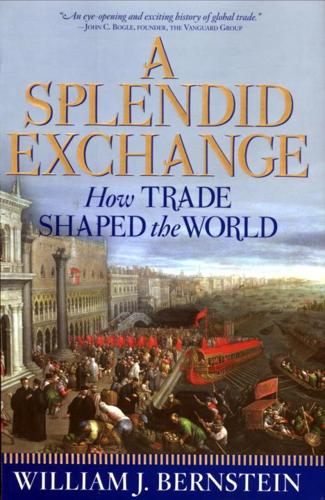
A Splendid Exchange: How Trade Shaped the World
by
William J. Bernstein
Published 5 May 2009
See Rodrigues see also Donna J. Nincic, "Sea Lane Security and U.S. Maritime Trade: Chokepoints as Scarce Resources," in Sam J. Tangredi, ed., Globalization and Maritime Power (Washington, DC: National Defense University Press, 2002), 143-169. 7. Jessie C. Carman, "Economic and Strategic Implications of Ice-Free Arctic Seas," in Globalization and Maritime Power 171-188. 8. Patrick J. Buchanan, The Great Betrayal (Boston: Little, Brown, 1998), 224. 9. Bairoch, Economics and World History, 47-55, 135-138. 10. Mark Bils, "Tariff Protection and Production in the Early U.S. Cotton Textile Industry," The Journal of Economic History, 44, no. 4 (December 1984): 1041, 1045. 11.
…
Calmes, Jackie, "Despite Buoyant Economic Times, Americans Don't Buy Free Trade," The Wall Street Journal (December 10, 1998). Carapace, Ian, Review of Roman Coins from India (Paula J. Turner), Classical Review 41 (January 1991): 264-265. Carman, Jessie C., "Economic and Strategic Implications of Ice-Free Arctic Seas," in Globalization and Maritime Power (Washington, DC: National Defense University Press, 2002). Carney, Timothy P., The Big Ripoff (New York: Wiley, 2006). Chau Ju-Kua, Chu-Fan-Chi, Friedrich Hirth and W. W. Rockhill, ed. and trans. (New York: Paragon, 1966). Chaudhuri, K. N., Trade and Civilization in the Indian Ocean (New Delhi: Munshiram Manoharlal, 1985).
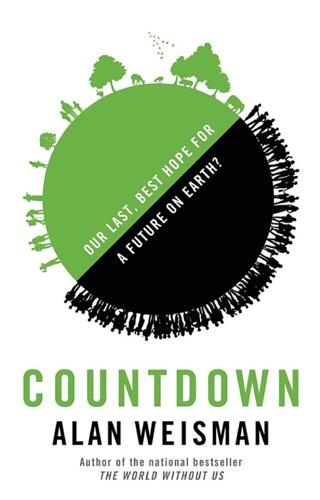
Countdown: Our Last, Best Hope for a Future on Earth?
by
Alan Weisman
Published 23 Sep 2013
Today’s globalized economy literally means an economy the size of our planet—but as Daly points out, that also means there’s no more room to expand. The addition of more fuel reserves than we once thought we had—in the form of gas we free by shattering bedrock, oil we wring from sand and shale, and newly ice-free Arctic deposits—seems impressive from a short-term perspective, such as an election cycle. But the math reveals that they’ll buy us relatively little extra time, and may cost much more than they give. The techniques to harvest them make alarming messes, and burning them turns the skies even more uncontrollable and the oceans increasingly corrosive.
…
But if we wait to act until all the numbers are in, we’ll have waited too long, which is why scientists keep jamming every possible variable into models that predict our likely future. Because technically they’re speculative, their credibility is attacked by whoever profits from business as usual. But thus far, the main failing in climate change models has been timidity: the worst possible case for an ice-free Arctic summer, predicted for 2050 back in 2008, has now been moved to as early as 2016. At what point, and with what proof or words, might politicians and industry be convinced that drastic change is already upon us, and will only worsen—perhaps fatally—if we don’t respond accordingly? Later that year, I would be asked by a prominent Japanese business magazine if I thought that people were being hysterical to demand an end to nuclear power in the wake of the Fukushima tragedy.
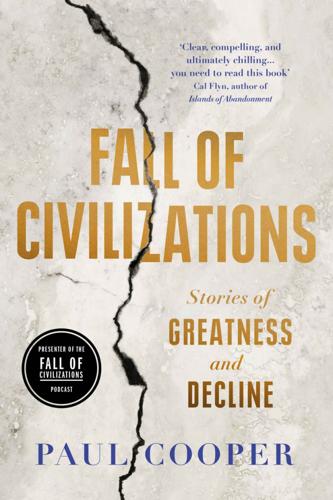
Fall of Civilizations: Stories of Greatness and Decline
by
Paul Cooper
Published 31 Mar 2024
One of these tipping points is the melting of the Arctic sea ice, which currently reflects up to eighty per cent of the sunlight that falls on it back into space, thus cooling the planet. We have now experienced multiple years when the Arctic has seen temperatures 20°C higher than average, with record low ice levels, and the sea is projected to have its first ice-free summer as early as the 2030s, ‘irrespective of emission scenarios’. After that, ‘Extended occurrences of an ice-free Arctic in the early summer months are projected later in the century.’6 With the reflective power of the ice cap gone, the energy of the sunlight will be absorbed by the sea instead. The feedback effect of all global ice and snow loss has been calculated to add fifty per cent to the global warming effect.
…
United Kingdom, Oxford University Press, 2017. Weisman, Alan. The World Without Us. United Kingdom, Ebury Publishing, 2012. Welzer, Harald. Climate Wars: What People Will Be Killed For in the 21st Century. Germany, Polity Press, 2015. Yeon-Hee Kim, Seung-Ki Min, Nathan P. Gillett, et al. ‘Observationally-constrained projections of an ice-free Arctic even under a low emission scenario.’ Nature Communications, 14, 3139 (2023). First published in the United Kingdom by Duckworth in 2024 Duckworth, an imprint of Duckworth Books Ltd 1 Golden Court, Richmond, TW9 1EU, United Kingdom www.duckworthbooks.co.uk For bulk and special sales please contact info@duckworthbooks.com © Paul Cooper, 2024 Maps copyright © Tom Jennings All rights reserved.
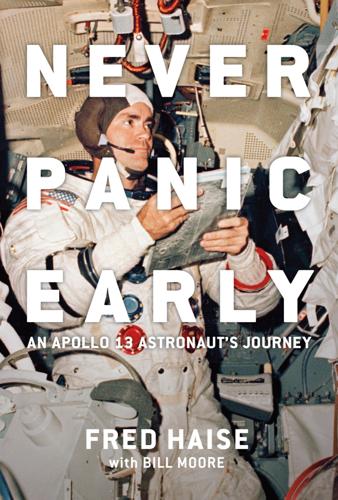
Never Panic Early: An Apollo 13 Astronaut's Journey
by
Fred Haise
and
Bill Moore
Published 4 Apr 2022
The site shows that the warming trend has grown over the past two centuries, with the greatest amount of the warming occurring in the past thirty-five years. Listing shrinking ice sheets, glacial retreat, sea-level rise, and extreme weather events, NASA predicts that sea levels will rise by as much as one to eight feet by the year 2100. NASA also predicts an ice-free Arctic in summers and more intense weather. While there is extensive coverage in the media about the possible effects of climate change, there are disagreements among experts and nonexperts on how to control this mounting crisis. Some think that the primary cause is the ever-growing human population.

Connectography: Mapping the Future of Global Civilization
by
Parag Khanna
Published 18 Apr 2016
That year, the nineteen-thousand-ton Yong Sheng sailed from Dalian to Rotterdam in thirty-five days. At present, more than fifty times more cargo traverses the Suez each year than the Arctic, but because temperatures rise faster at the earth’s poles (while water levels rise faster at the equator), the Arctic could become a major reliable shipping route by 2020. Ice-free Arctic shipping features two major corridors: The Northern Sea Route, taken by China’s Yong Sheng, connects the two ends of Eurasia (the Far East and northern Europe) over Russia, through the Bering Strait and past Russia’s Kamchatka Peninsula—a full two weeks faster than the Suez Canal route. Meanwhile, the Northwest Passage connects East Asia to North America’s East Coast by passing over Alaska and Canada instead of Russia, shaving ten thousand kilometers off the Panama Canal route.

This Changes Everything: Capitalism vs. The Climate
by
Naomi Klein
Published 15 Sep 2014
See also: “Climate Stabilization Targets: Emissions, Concentrations, and Impacts over Decades to Millennia,” Committee on Stabilization Targets for Atmospheric Greenhouse Gas Concentrations, National Research Council, National Academy of Sciences, 2011, p. 31; Schellnhuber et al., “Turn Down the Heat,” pp. 37–41. TENS OF THOUSANDS: Jean-Marie Robine et al., “Death Toll Exceeded 70,000 in Europe During the Summer of 2003,” Comptes Rendus Biologies 331 (2008): 171-78; CROP LOSSES: “Climate Stabilization Targets,” National Academy of Sciences, pp. 160–63. 19. ICE-FREE ARCTIC: Ibid., pp. 132–36. VEGETATION: Andrew D. Friend et al., “Carbon Residence Time Dominates Uncertainty in Terrestrial Vegetation Responses to Future Climate and Atmospheric CO2,” Proceedings of the National Academy of Sciences 111 (2014): 3280; “4 Degree Temperature Rise Will End Vegetation ‘Carbon Sink,’ ” University of Cambridge, press release, December 17, 2013; WEST ANTARCTICA STUDY: E.
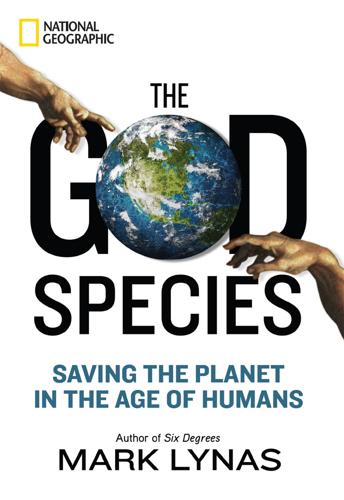
The God Species: Saving the Planet in the Age of Humans
by
Mark Lynas
Published 3 Oct 2011
Kwok et al., 2009: “Thinning and Volume Loss of the Arctic Ocean Sea Ice Cover: 2003–2008,” Journal of Geophysical Research, 114, C07005. 12. NSIDC, “Arctic Oscillation Brings Record Low January Extent, Unusual Mid-latitude Weather,” February 2, 2011, http://nsidc.org/arcticseaicenews/2011/020211.html. 13. M. Wang and J. Overland, 2009: “A Sea Ice Free Summer Arctic Within 30 Years?,” Geophysical Research Letters, 36, L07502. 14. T. Cronin et al., 2010: “Quaternary Sea-ice History in the Arctic Ocean Based on a New Ostracode Sea-ice Proxy,” Quaternary Science Reviews, 29, 35–36. 15. V. Petoukhov and V. A. Semenov, 2010: “A Link Between Reduced Barents-Kara Sea Ice and Cold Winter Extremes over Northern Continents,” J.
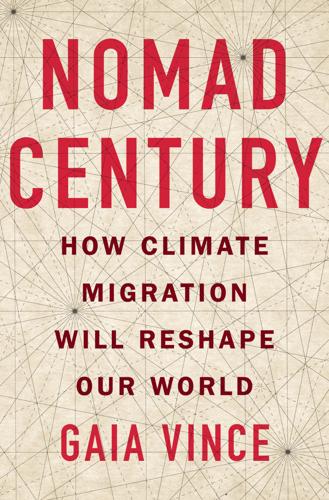
Nomad Century: How Climate Migration Will Reshape Our World
by
Gaia Vince
Published 22 Aug 2022
Many countries significantly under-report their greenhouse gas emissions, so their climate pledges are anyway based on flawed data. China and India, the world’s first and fourth biggest emitters, will have higher emissions in 2030 than 2020. In 2021, the Finnish town of Salla, located inside the Arctic Circle, launched its bid to host the 2032 Summer Olympics. The first ice-free summer for the Arctic Ocean is expected in 2035. Climate models predict that we’re on track for a heating of somewhere between 3°C and 4°C for 2100 – and bear in mind that these are global average temperatures. Subtract the seas from those calculations, and what you find is that, at the poles and over the lands where people live, the increase may be double that, meaning people could be experiencing an increase of as much as 10°C by 2100.
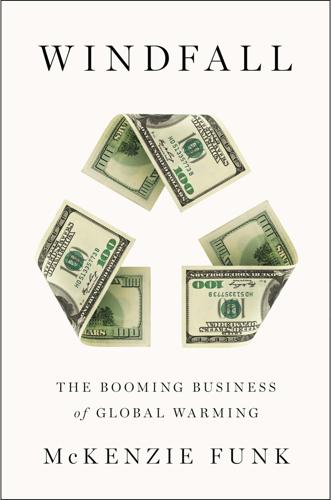
Windfall: The Booming Business of Global Warming
by
Mckenzie Funk
Published 22 Jan 2014
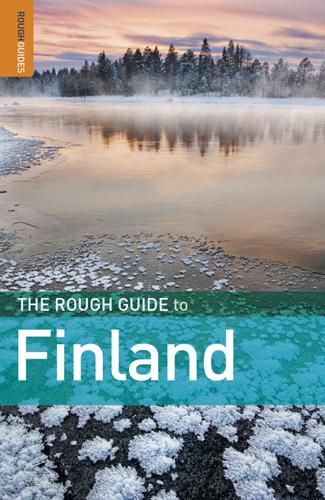
The Rough Guide to Finland
by
Rough Guides
Published 31 May 2010
The eventual collapse of the talks caused the provisional government and its supporters to flee to Finland as a Finnish battalion of the Soviet Red Army moved in and occupied the area. Subsequently the Karelian Workers’ Commune, motivated by the Finnish Communists and backed by Soviet decree, was formed. Their claims were ignored by the subsequent Treaty of Tartu, which gave Finland the Petsamo area, which led to a valuable ice-free harbour on the Arctic coast, but rejected the Karelians’ demands for self-determination. < Back to History The republic The White success in the civil war led to a right-wing government with a pro-German majority, which wanted to establish Finland as a monarchy rather than the republic allowed for under the 1917 declaration of independence.